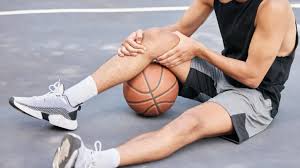Sports injuries occur during athletic activities or exercise and can range from minor sprains to more serious medical conditions. These injuries typically fall into two categories: acute traumatic injuries and overuse injuries. Understanding how to prevent these issues is key to maintaining an active and healthy lifestyle. Here’s more information on how to prevent sports injuries:
How To Prevent Overuse Injuries?
Overuse sports injuries are the result of repetitive micro-trauma to tendons, bones, and joints. These often occur when you increase the intensity, duration, or frequency of an activity too quickly. Preventing them involves a structured and mindful approach to your training regimen.
Gradual Progression
One of the most effective prevention strategies is proper progression. Gradually increasing the demands on your body allows your muscles, bones, and connective tissues time to adapt and strengthen. Avoid sudden spikes in your training volume or intensity. It is also helpful to incorporate cross-training into your routine. Engaging in different types of activities may help prevent repetitive strain on one specific area of the body, promoting balanced muscle development and reducing the risk of overuse.
Proper Form
Proper technique is also fundamental. Using incorrect form places undue stress on certain parts of your body, leading to strain and potential injury. Try working with a coach or trainer to verify you are using the correct form for your sport or activity. Another way to reduce unnecessary stress during activities is to use appropriate equipment. Using appropriate equipment, like properly fitting footwear or sports gear, can provide support and reduce stress on your joints and muscles.
How To Avoid Traumatic Injuries?
Traumatic injuries, like fractures, dislocations, and ligament tears, happen from a sudden force or impact. While not all of these incidents can be prevented, you can take several steps to lower your risk. A comprehensive warm-up routine is fundamental before any physical activity.
Warming up increases blood flow to the muscles, making them more pliable and less susceptible to tears. A quality warm-up should include light aerobic exercise followed by dynamic stretching that mimics the movements of your sport. After physical activity, a cool-down period helps your body gradually return to a resting state.
Wearing appropriate protective gear is non-negotiable for many sports. Helmets, pads, mouthguards, and other protective equipment are designed to absorb impact and protect vulnerable areas of the body from traumatic force. To help reduce your risk of sudden injury, check that your sports gear fits correctly and is well-maintained.
How Can You Manage Injuries at Home?
Should a minor injury occur, initial home management can be beneficial before seeking professional advice. For acute soft tissue injuries like sprains or strains, the RICE method (Rest, Ice, Compression, Elevation) is often recommended for early injury management. Ice therapy helps reduce swelling and numb pain by constricting blood vessels. For ice therapy, an ice pack or cold compress is typically applied for 10-minute intervals.
After the initial inflammatory phase, heat therapy may be more appropriate for chronic soreness or stiffness. Heat increases blood flow, which can help relax tight muscles and soothe aching joints. You should contact a medical professional if you experience severe pain, swelling, or numbness, or if you are unable to bear weight on an affected limb. If an injury does not improve after a few days of home management, consulting a healthcare provider is advised for a proper diagnosis and treatment plan.
Learn More About Sports Injuries
By implementing proper training techniques, using correct equipment, and listening to your body, you can significantly reduce your risk of overuse or traumatic injuries. For persistent or severe conditions, a medical evaluation can provide the necessary guidance for an effective recovery. Contact a podiatrist or sports injury specialist to learn more about managing and treating injuries.


Leave a Reply